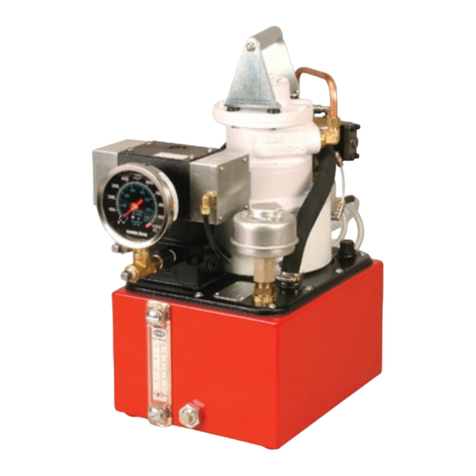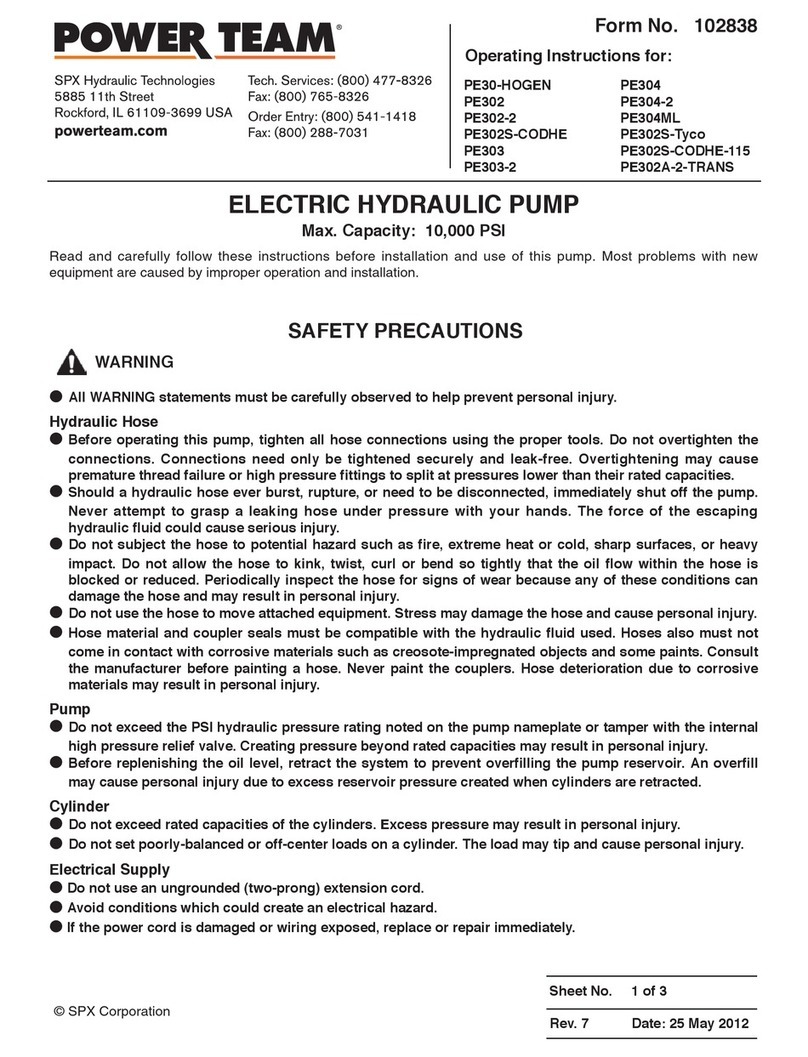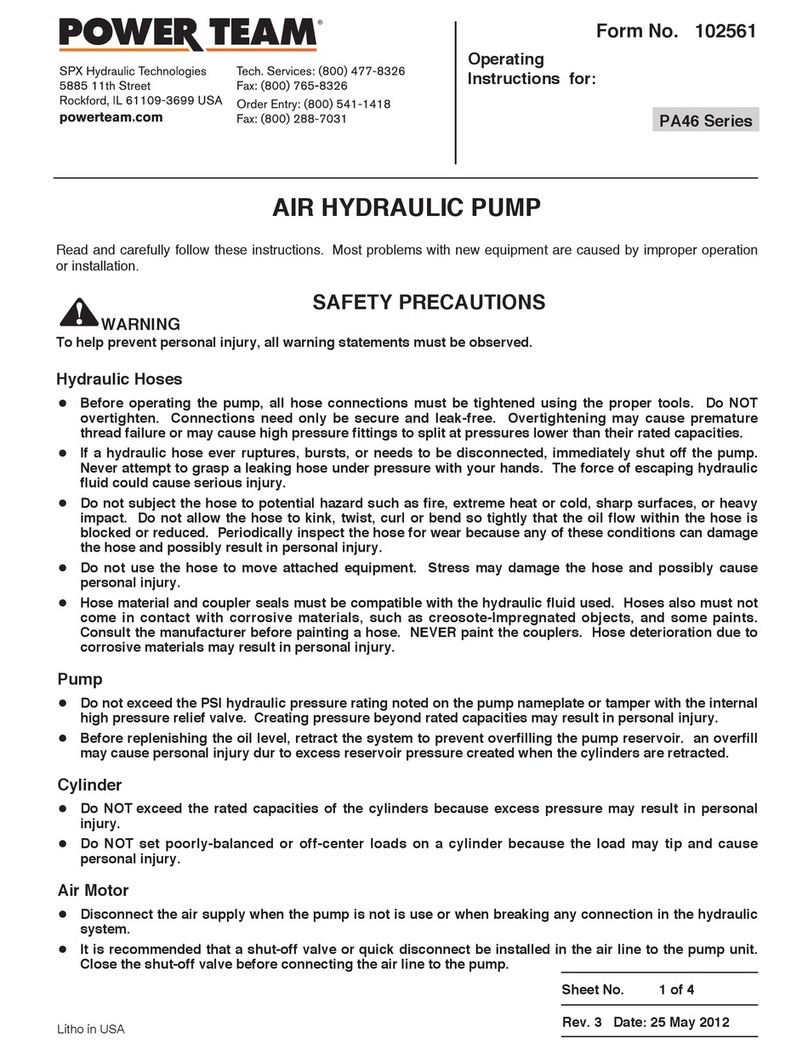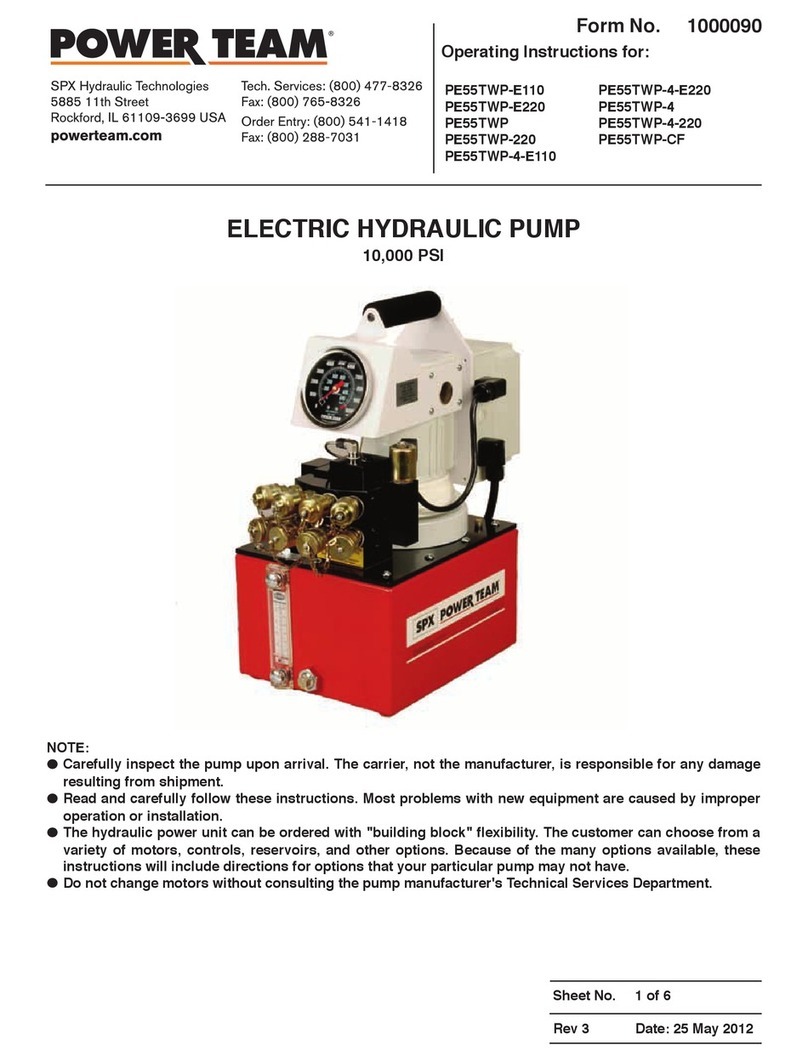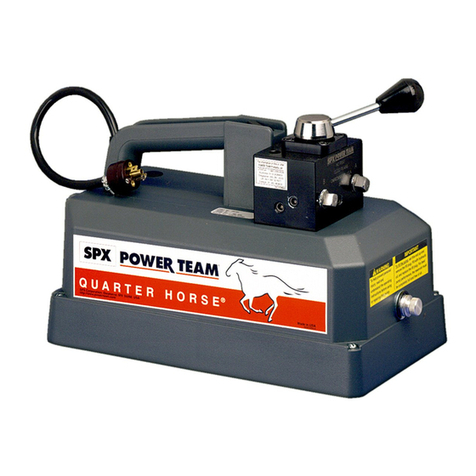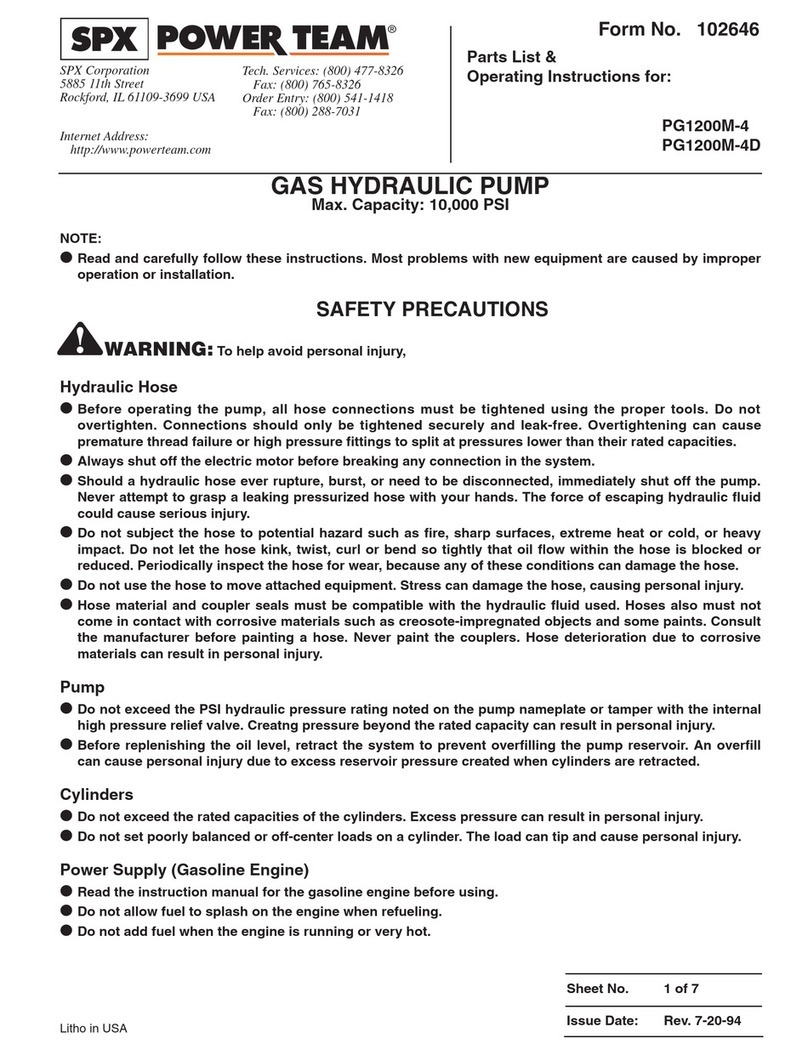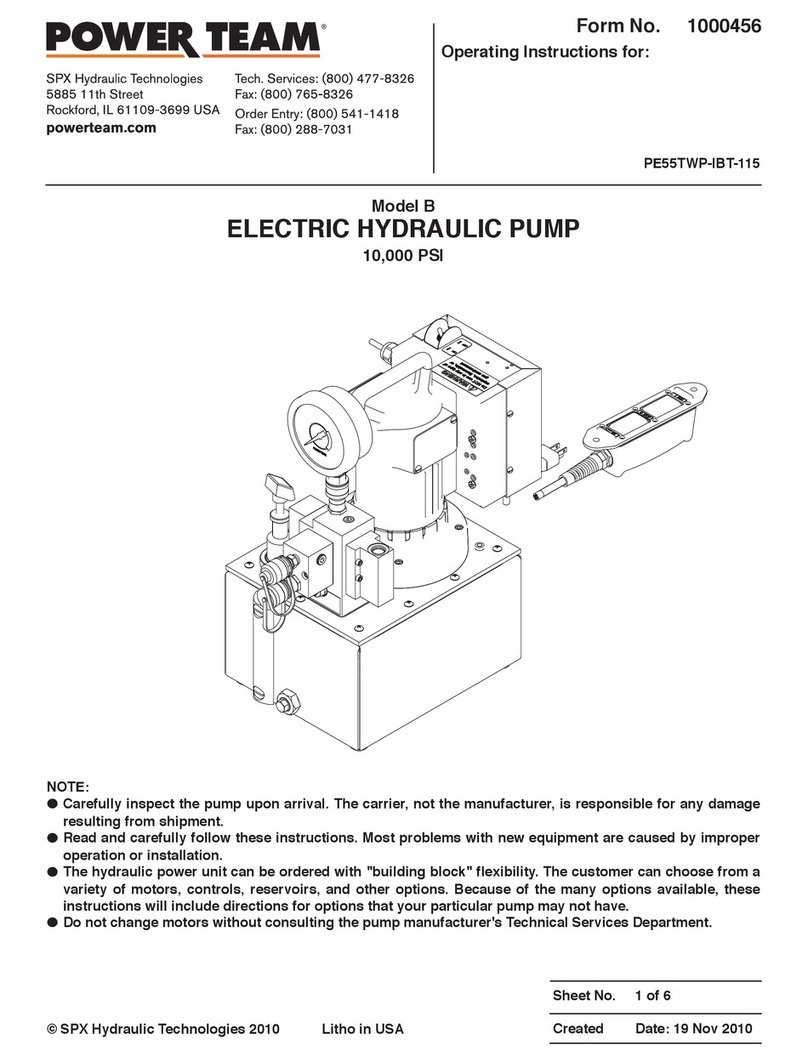
Operating & Maintenance Instructions, Form No. 105006, Back sheet 2 of 3
Bleeding Air from the System
Upon initial startup or after prolonged use, a significant amount of air may accumulate within the hydraulic system.
This entrapped air can cause the cylinder to respond slowly or behave in an unstable manner. To remove the air, run
the system through several cycles (extending and retracting cylinders) free of any load. NOTE: The cylinder must
be at a lower level than the pump to allow air to be released through the pump reservoir.
Inspecting the Hydraulic Fluid evel
Check the fluid level in the reservoir periodically. With all cylinder(s) retracted, the fluid level should be 1-3/4" from the
filler hole. Drain, clean and replenish the reservoir with high-grade, approved Power Team hydraulic fluid yearly or
more often if necessary. The frequency of fluid change will depend upon the general working conditions, severity of
use and overall cleanliness and care given the pump.
Maintenance Cleaning
1. Keep the outer surface of the pump as free from dirt as possible.
2. Protect all unused couplers.
3. Keep all hose connections free of dirt and grime.
4. Keep the filler/breather cap clean and unobstructed at all times.
5. Equipment connected to the pump must be kept clean.
6. Use only high-grade, approved Power Team hydraulic fluids in this pump. Change as recommended.
Draining and Cleaning the Reservoir
IMPORTANT: Clean the pump exterior before the pump interior is removed from the reservoir.
1. Remove the screws that fasten the pump assembly to the reservoir. Remove the pump assembly from the
reservoir. Do not damage the gasket, filter or safety valve.
2. Drain the reservoir of all fluid. Refill half full with clean Power Team hydraulic fluid.
3. Place the pump assembly back onto the reservoir and secure with two machine screws assembled on opposite
corners of the housing.
4. Run the pump for several minutes. Remove the two cover screws and lift off the pump assembly again. Drain and
wipe out the reservoir with a clean, lint-free cloth.
5. Fill the reservoir with high-grade, approved Power Team hydraulic fluid to 1-3/4" from the fill hole. Place the pump
assembly (with gasket) on the reservoir and install the screws. Tighten securely and evenly.
Adding Fluid to the Reservoir
1. Cylinder(s) must be fully retracted and the air supply disconnected when adding fluid to the reservoir.
2. Clean the entire area around the filler/breather cap before removing the filler/breather cap.
3. Use a clean funnel with filter when adding fluid.
4. Use only approved Power Team hydraulic fluids.
5. Fill to 1-3/4" of the filler hole.
Priming the Pump Unit
1. Connect the fluid line to the pressure port and keep the return port plugged. Place the other end of the fluid line in
the pump filler hole.
NOTE: If the fluid lines are connected to a remote valve, shift the valve into the center position and plug
both cylinder ports on the valve. This lets fluid circulate through the valve and back to the pump reservoir;
thereby allowing the pump to prime.
2. Attach air line with shut-off valve to the pump.
3. Open the air valve. Pump will begin to reciprocate, and fluid will advance through the hose or fluid line and return to
the pump reservoir. Allow the pump to cycle approximately 15 seconds.
4. Plug the manifold pressure port, or shift the valve to pressurize the circuit. If the pump builds pressure, it has been
successfully primed.
Periodic Cleaning
IMPORTANT: The greatest single cause of failure in hydraulic pumps is dirt. Keep the pump and attached
equipment clean to prevent foreign matter from entering the system.
All unused couplers must be sealed with thread protectors. All hose connections must be free of grit and grime. Use
only high-grade, approved Power Team hydraulic fluid in this unit and change at least once a year.

